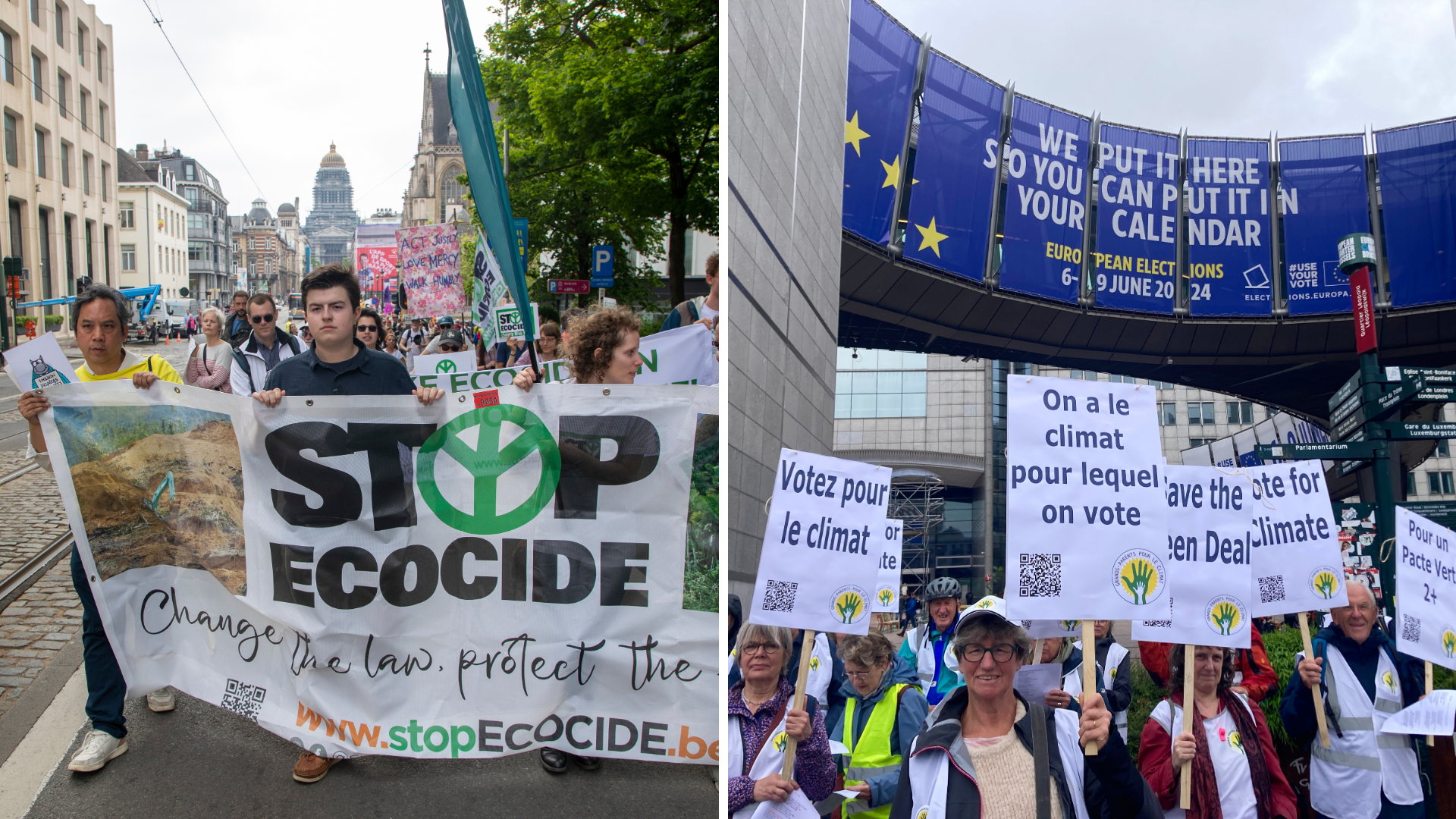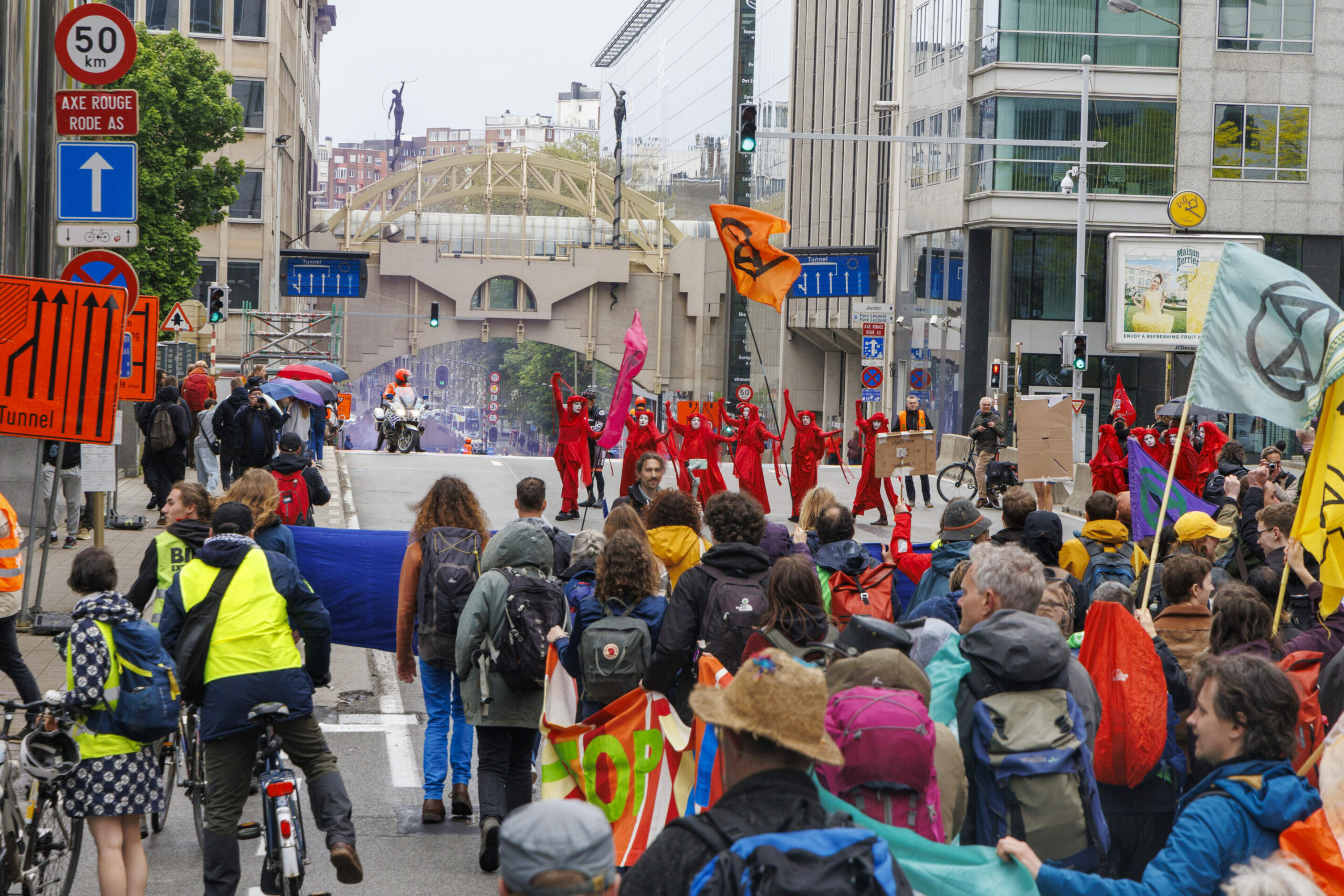On Friday 20 September, 700 protesters took to the streets of Brussels in solidarity with climate activists across the globe during this year’s Global Climate strike. Yet the scene was starkly different from the one five years ago, when 15,000 protesters marched through the same city, joining what became the largest climate protest in history. What happened? Why the decline in numbers? And crucially, what has changed in the fight for our planet?
Before stepping down from the stage outside Brussels-Central station last Friday, former Vice-chair of the Intergovernmental Panel on Climate Change (IPCC), Jean-Pascal van Ypersele, issued a powerful call: "It's time to rise again for the climate."
Five years ago, the energy in Brussels was electric. Thousands marched with hope, urgency, and a belief that real change was possible. Their collective cry echoed across Europe, contributing to the success of Green parties throughout the continent and inspiring the European Commission to launch the European Green Deal in 2020.
"Young people often don’t realise the impact these protests had," said co-founder of Rise for Climate Kim Le Quang, 53. That morning, he had been at the Université Libre de Bruxelles (ULB) handing out flyers to students on their first day of classes, promoting the upcoming protest on 20 September. "I try to tell them 'Listen, what you did was incredibly important.'"

Student strike action, organised by 'Youth For Climate', urging pupils to skip classes to protest a lack of climate awareness, Tuesday 26 March 2019 in Brussels. Credit: Belga / Nicolas Maeterlinck
For the past six years, Rise for Climate has been a driving force behind Brussels' regular climate protests. Le Quang recalls the moment the idea first sparked over a casual drink with co-founder, singer Getch Gaetano, "It was at the time when UN Secretary-General Antonio Guterres published UN reports which talked about the threat of extinction of living things. We decided that it was really important to protest more regularly." They decided to stage monthly protests.
On 8 September 2018, Rise for Climate collaborated with other NGOs like Greenpeace and Belgium’s Coalition Climat — an organisation bringing together more than 90 Belgian climate justice-related civil society organisations. Together, they rallied 1,000 people to their first protest in front of the European Parliament. "The idea was to blend the grassroots spirit of a citizen's movement with professional expertise of NGOs," explained Le Quang.
After the first march, the citizens' climate movement gained momentum. In October 2018, rising star Greta Thunberg joined them outside the European Parliament and by January 2019, the movement reached had reached a fever pitch; 70,000 people flooded the streets of Brussels in a call for urgent climate action.
Among those 70,000 protesters, young people outnumbered the rest. Inspired by Swedish climate activist Greta Thunberg, Flemish high school student Anuna De Wever and her Walloon counterpart Adélaïde Charlier founded Youth for Climate in 2019.
"The changes that happened were thanks to this movement of young people. They were in a better position to demand a future. And it was so right, so just. Their fight was magnificent," remembers Myriam Gérard, 74, secretary for Grandparents for Climate (GPC), a movement of elderly climate activists.
A tapestry of grassroots citizens organisations
Despite dwindling numbers at some marches, citizens movements have continued to grow and multiply. Almost every climate protest held in Brussels is the result of collaboration between a tapestry of grassroots organisations each bringing their own unique strengths, expertise, and diverse voices to the table.
Five years on, Youth for Climate is still a rather unique country-wide, self-managed, horizontal organisation managed by and for young people. Clément Thoma, 22, a student at the Catholic University of Louvain (UCL) and member of Youth for Climate, defined it as "an organisation of young people who want to mobilise for the climate without having to wait or join bigger organisations with bigger budgets, but also bigger resources that tend more towards bureaucracy."

Protests organised in Brussels are almost always the result of a collaboration between many climate organisations. Credit: Belga.
Anyone between the ages of 15 and 26 (approximately) can join either their local or national branch, or both. While local chapters often focus on activities in schools to raise awareness about the climate crisis, the national branch is more engaged in political mobilisation. "This involves bringing demands to politicians, putting pressure on them, and participating in various campaigns," explained Thoma. The national branch of Youth for Climate coordinated with others to organise last Friday’s march.
Founded in 2015, Grandparents for Climate (GPC) has a much more pyramidal organisational structure, but organises similar activities aiming to "transmit a love for life and nature" by encouraging lifestyle changes and advocacy as a member of Coalition Climat. "One of our raisons d'être, especially after the marches, was to support young people. We were present at all the marches, applauding and encouraging them," emphasised Gérard.
A dwindling movement?
One of the biggest challenges facing all climate groups is recruitment — finding people who are not only passionate but willing to invest their time and energy. "The difficulty inherent to the climate movement is finding motivated people, because while there may be several hundred or even several thousand people at demonstrations, there are actually relatively few who are prepared to put their heart and soul into an organisation," explained Thoma.
The general public seems to have grown weary of the slow, often intangible results of climate activism, leading some to question its urgency and relevance.
"Because five years ago, they scared us by saying that our world was going to collapse and that we were heading straight towards disaster," remarked the Extinction Rebellion activist going by the code name RedEyes. "But now, years later, the world hasn’t 'collapsed'. There’s a sense of disillusionment, where people think, 'At the end of the day maybe it’s not as dire as they told us.'"
Since 2019, Belgians faced a pandemic and an energy crisis linked to the war in Ukraine. "Everyone's daily problems resurface, and maybe climate issues begin to feel distant," suggested Le Quang. "I think those we see at the climate marches are often a little more well-off, because for those who have the most problems, their priority is work, studies, housing, etc."
The path forward: civil disobedience and social justice
In Belgium, those who continue to fight for climate justice have begun to turn increasingly to a different form of protest: civil disobedience.
Extinction Rebellion, an environmental movement founded in the UK in 2018, arrived in Belgium during the peak of the 2019 climate protests. With three branches in Brussels and many more across Belgium, the group engages in nonviolent acts of civil disobedience, deliberately breaking the law to make their voices heard. "Saying It's illegal so it's wrong is incorrect. Sometimes it's what's legal that's wrong," insists RedEyes.
To RedEyes, civil disobedience in climate activism is not just about the striking, symbolic protests. These powerful actions often amplify the message put forth by climate groups focused on lobbying or scientific research, highlighting the value of collaboration among the different groups.

An Extinction Rebellion protest against fossil fuels blocking Rue Belliard in Brussels on 4 May 2024. Credit: Belga.
Extinction Rebellion and Youth for Climate are both supporting members of Belgian civil disobedience coalition group Code Rouge (Code Red) founded in 2022. The movement has already organised three campaigns including one in 2022 where thousands of Code Rouge protesters blockaded TotalEnergies’ site at Feluy and its depot in Liège, disabling rail traffic to and from the site.
After debating their involvement in acts of civil disobedience, a majority of GPC members were ultimately in favour. "I spent a night on the train tracks alongside Extinction Rebellion Ghent," shared Myriam Gérard with pride. "I want to take part in concrete actions that make a real difference, to find the right levers, really."
More than ever, climate activists are highlighting the intersection between climate justice and broader social justice. Since the outbreak of the war in Gaza, Greta Thunberg has increasingly emphasised that "the fight against colonialism and corporations’ destruction of the planet are intrinsically linked."
"We know that it makes no sense to fight for the climate without pursuing the goal of a just transition. It will only polarise society. At the end of the day this is also a question of social justice," added Gérard.
Thoma, an active member of both the national and Louvain branches of Youth for Climate, is also involved in anti-fascist, feminist, and anti-racism groups. "Because they are all interconnected and have a common root," said Thoma.
While the initial excitement of the 2019 protests may have waned, the solidarity and unwavering determination of climate activists to amplify their voices is stronger than ever.

